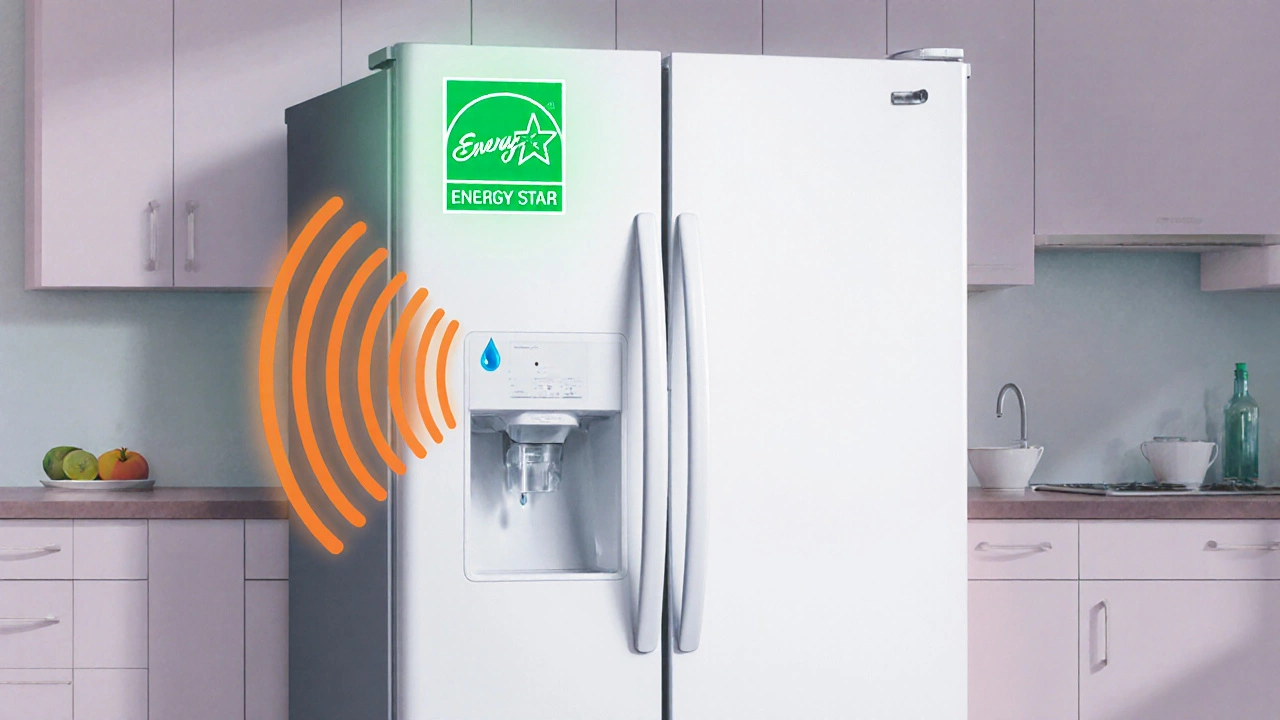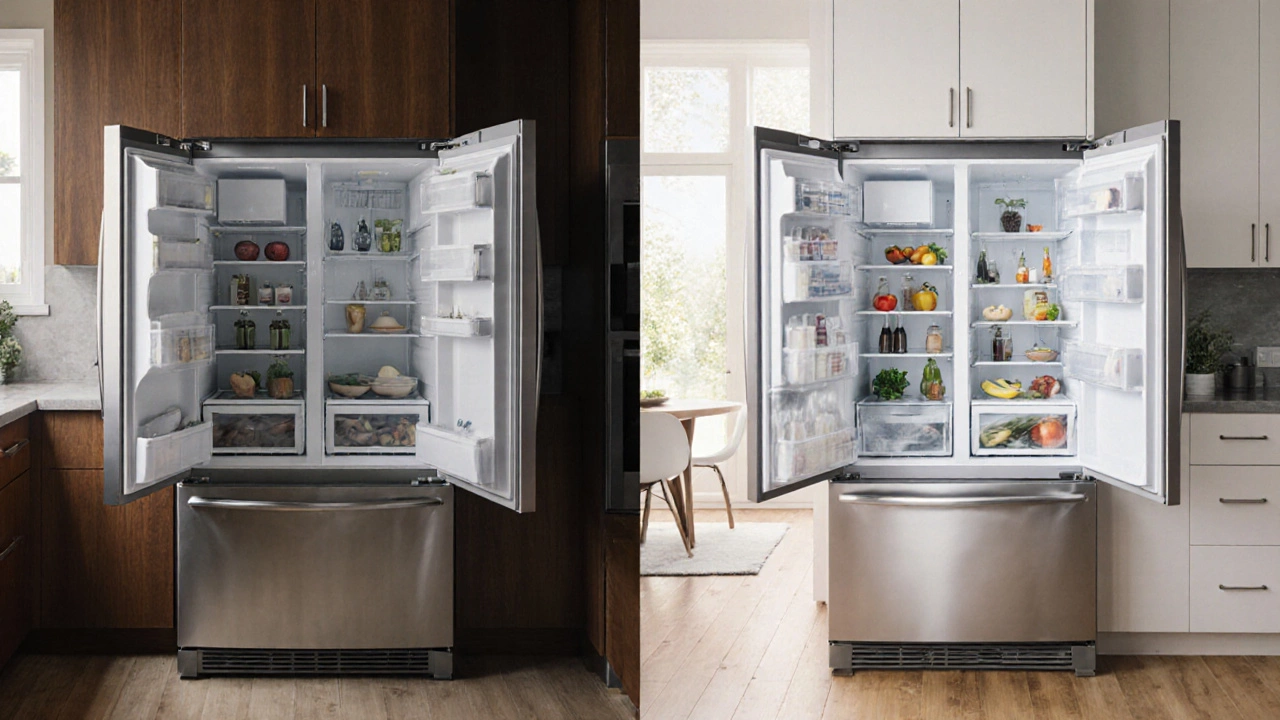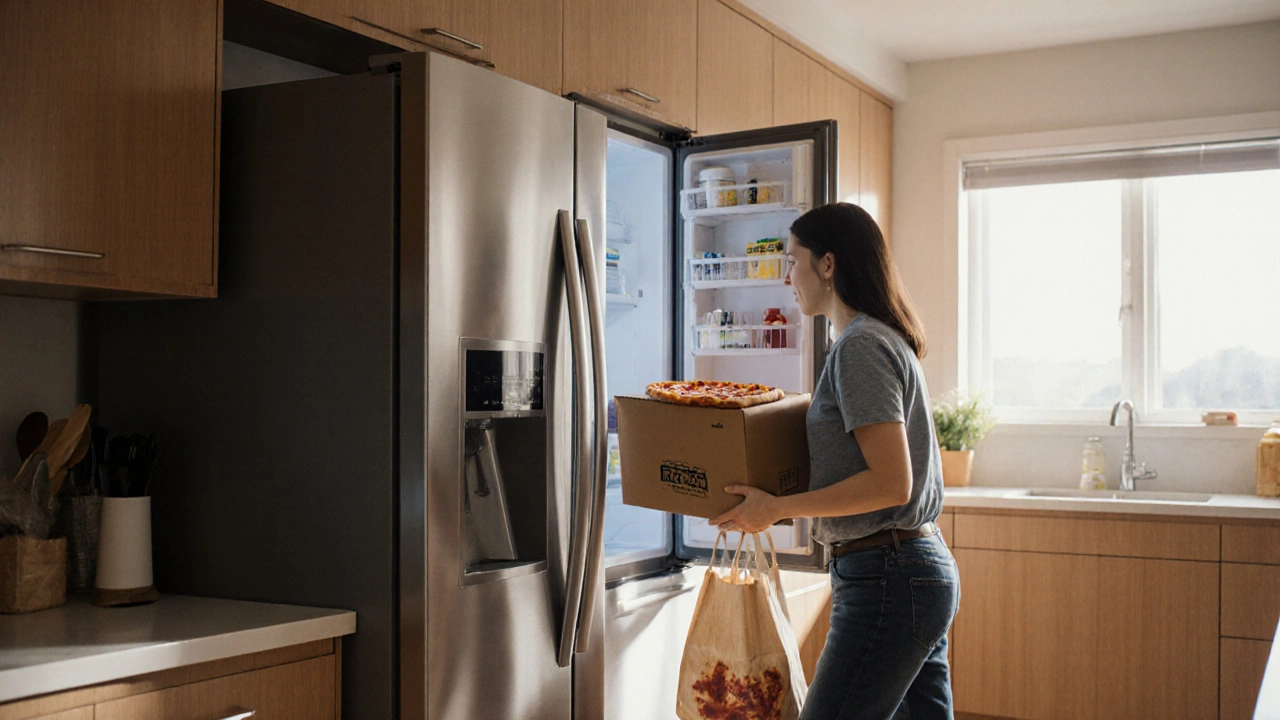Refrigerator Energy Cost Calculator
Estimate your annual energy costs for a side-by-side refrigerator compared to more efficient models. Based on data from the article, side-by-side models typically consume 5-15% more energy than other types.
Your Energy Cost Analysis
Save $0.00 annuallySide-by-Side Refrigerator
Annual Cost: $0.00
Energy Use: 0.00 kWh/year
More Efficient Model
Annual Cost: $0.00
Energy Use: 0.00 kWh/year
Switching to a more efficient model could save you $0.00 annually. Over 5 years, that's $0.00 in potential savings.
Pro Tip: Based on the article, side-by-side models typically consume 5-15% more energy than other types. The calculator uses conservative estimates. Consider choosing a model with a high Energy Star rating to maximize savings.
When you’re planning a kitchen, the fridge often decides how the whole space flows. A Side-by-side refrigerator is the classic tall‑box with two vertical doors, freezer on the left and fresh food on the right. It looks sleek, but its design comes with a handful of real‑world pain points that can trip up anyone from first‑time buyers to seasoned remodelers.
Why the Layout Feels Restrictive
The most obvious drawback is the narrow door opening. Each door is only about 18‑20 inches wide, so you can’t fit a large grocery bag or a big pizza box without juggling. In tight kitchens, that extra inch of swing can be the difference between a smooth unload and a grocery‑bag‑crash.
Space‑Efficiency (or Lack of It)
Because the freezer and fridge share the same vertical envelope, you end up with a taller unit for the same total capacity as a French door refrigerator. That extra height can eat up ceiling clearance, especially in older homes with lower cabinets.
Energy Consumption and Cost
Side‑by‑side models tend to be less energy‑efficient than newer designs. The older compressor technology and the constant need to keep two separate compartments at different temperatures can push the annual electricity bill up 5‑15% compared with a comparable Top freezer refrigerator that carries an Energy Star rating. In Australia, a typical side‑by‑side draws about 500kWh per year, costing roughly $90‑$120 AUD in 2025 rates.
Limited Adjustable Storage
Inside, you’ll find narrow shelves that are hard to remove or slide. While some models offer Adjustable shelves, they rarely accommodate tall items like a 2‑liter bottle or a full-size casserole dish. The freezer side usually relies on pull‑out drawers that are shallow, making it awkward to store large turkey or pizza trays.
Noise and Vibration
Older side‑by‑side units often use a louder compressor and a less refined fan system. The result is a humming noise that bounces off kitchen cabinets, especially noticeable in open‑plan homes. If you love quiet mornings with coffee, you’ll hear the fridge louder than a typical Smart fridge that uses inverter compressors.

Ice Maker and Water Dispenser Issues
Most side‑by‑side refrigerators ship with an ice maker and a built‑in water dispenser. While convenient, the dispenser mechanisms add another point of failure. Leaks, clogs, or a broken ice‑ejector can turn a good fridge into a water‑spillage headache. And if you don’t use the dispenser often, you’re paying for a feature you’ll never need.
Door Swing and Kitchen Traffic Flow
The two‑door swing means you’re constantly opening one side at a time. In a busy kitchen, that can create a bottleneck, especially if the fridge sits in the middle of a work triangle. A French door refrigerator with a single wide door or a bottom freezer model with a pull‑out drawer usually eases traffic.
Temperature Zone Challenges
Because the freezer and fresh‑food compartments are separate, you end up with two temperature zones to manage. If the freezer door is left open a few minutes, the fridge side can warm up, affecting perishable items. Modern designs often use a single evaporator with independent fans to keep zones more stable.
Resale Value and Trends
Home‑buyers today tend to favor sleek, energy‑smart appliances. A side‑by‑side fridge can feel dated compared to a Smart fridge with Wi‑Fi connectivity, touch panels, and camera interiors. When it comes time to sell, you might need to lower the asking price or upgrade the appliance to stay competitive.

Comparison Snapshot
| Feature | Side‑by‑Side | French Door | Top Freezer |
|---|---|---|---|
| Typical Capacity (cuft) | 24‑28 | 22‑26 | 18‑22 |
| Energy Star | Yes (older models) | Yes (newer models) | Yes (most) |
| Door Swing | Two vertical doors | Two side doors + bottom freezer | One top door + bottom freezer |
| Adjustable Shelves | Limited | Generous | Standard |
| Ice/Water Dispenser | Standard | Optional | Rare |
| Noise Level (dB) | 38‑44 | 33‑38 | 35‑40 |
Tips to Mitigate the Drawbacks
- Measure door swing clearances carefully; leave at least 24inches of open space.
- Choose a model with a high Energy Star rating to offset higher power draw.
- Buy a fridge with a removable ice maker if you rarely use ice.
- Use a kitchen cart or pantry shelves to store oversized items that won’t fit.
- Consider adding a sound‑absorbing panel behind the fridge if noise is a concern.
When a Side‑by‑Side Might Still Make Sense
If you have a narrow kitchen layout where a wide French‑door opening would hit a wall, the vertical doors of a side‑by‑side can actually fit better. Also, families that need a built‑in ice maker for frequent entertaining may appreciate the convenience despite the other cons.
Bottom Line
Side‑by‑side refrigerators deliver a classic look and built‑in water/ice features, but they sacrifice storage flexibility, energy efficiency, and ease of access. Weigh the trade‑offs against your kitchen’s dimensions, your budget, and how you use the fridge daily. If the cons outweigh the perks, explore the newer French‑door or top‑freezer options before you sign the purchase contract.
Frequently Asked Questions
Do side‑by‑side refrigerators use more electricity than other types?
Yes, on average they consume about 5‑15% more energy than comparable top‑freezer or French‑door models, mainly because of older compressors and the need to maintain two separate temperature zones.
Can I fit a large grocery bag in a side‑by‑side fridge?
It can be tricky. The doors are narrow, so you often have to transfer items from the bag to the shelves one by one. A wider French‑door or bottom‑freezer layout handles bulk items more easily.
Is the ice maker worth the extra cost?
If you entertain often or have a large family that consumes ice daily, the built‑in ice maker adds convenience. Otherwise it’s a maintenance point that can leak or fail, so you might skip it.
How does noise compare to other fridge types?
Side‑by‑side units typically register 38‑44dB, louder than many modern French‑door or inverter‑compressor models that hover around 33‑38dB.
Will a side‑by‑side fridge lower my home’s resale value?
Potentially, yes. Buyers often prefer energy‑efficient, sleek designs. If the rest of the kitchen is modern, a dated side‑by‑side could be a negotiating point.


